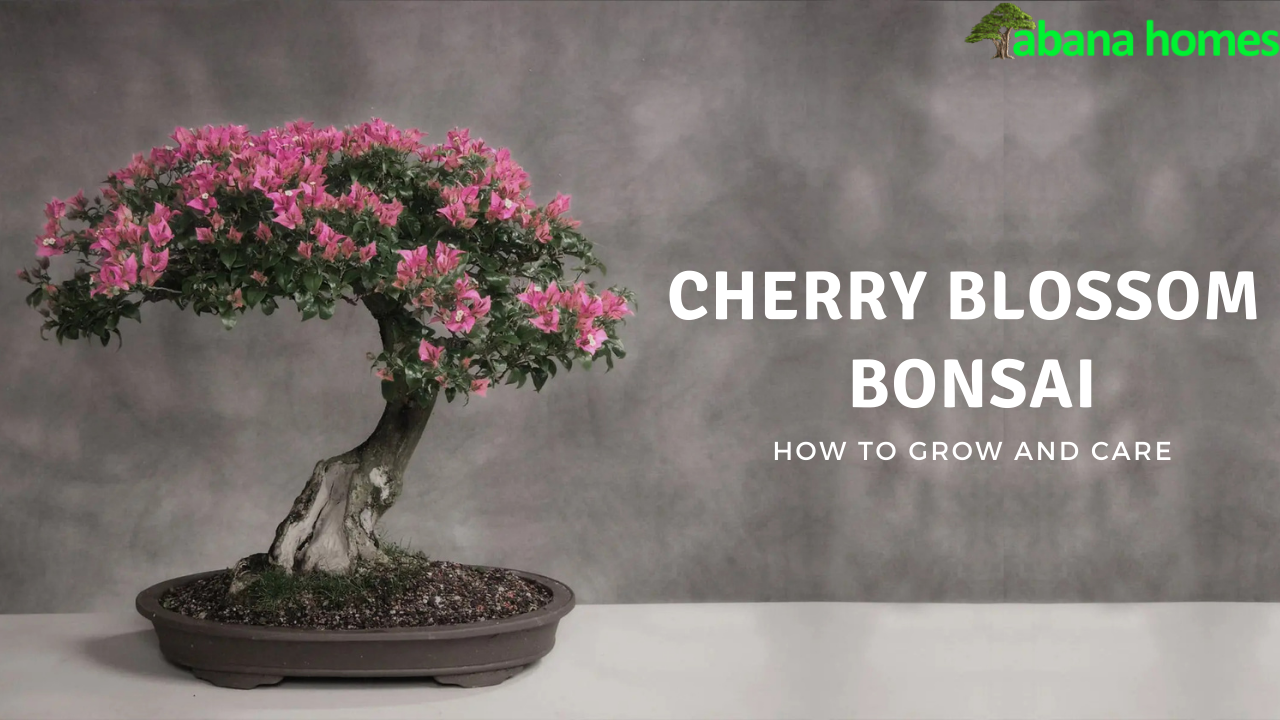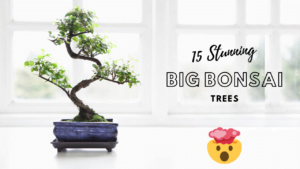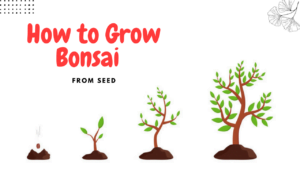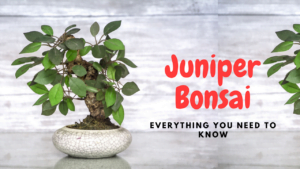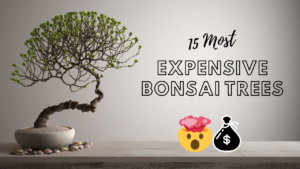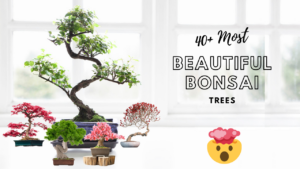Want to bring this beautiful piece of Japan to your home?
Do you know that there is a longstanding tradition in Japan to watch and admire the beauty of cherry blossom trees, also known as Sakura?
But you don’t have to live in Japan to appreciate the beauty of this bonsai. In fact, cherry blossom bonsai is the most popular grown bonsai in other parts of the world.
Furthermore, caring for these plants is simple. Read below to learn how.
Facts about Cherry Blossom Bonsai (sakura bonsai)
| Scientific name | Prunus serrulata |
| Height | 15 inches |
| Width | 10 inches |
| Sunlight | Full sunlight |
| Flowering time | Spring |
| Life span | 30-40 years |
Outdoor bonsai trees are a wonderful way to bring nature and beauty to your outdoor space. These miniature trees require special care and attention, but with the right conditions, they can thrive for years. Popular outdoor bonsai tree species include the Japanese Maple, Pine, and Juniper. Enjoy the peace and tranquility of nature with an outdoor bonsai tree.
Types of Cherry Blossom Bonsai
You would be surprised to know that there are more than 420 types of cherry blossom bonsai species. Among them, Prunus Serrulata is the most popular. The Cherry Blossom is often associated with Japan but it is also found in China and Korea, too.
Plums, apricots, almonds, and peaches are some other plants in the Prunus family.
The cherry blossom bonsai is known for its beauty. This bonsai produces gorgeous blossoms in the early spring. These blossoms fall to the ground and create a gorgeous backdrop of pink.
Also, the plant is known as Japanese Cherry blossom bonsai, Oriental cherry blossom bonsai, and East Asian cherry blossom bonsai.
Growing Cherry Blossom Bonsai from seeds and cuttings
Seeds:
- Get a large shallow pot to germinate seeds. The pot should be shallow enough to hold up to 4 seeds.
- Now fill the pot with peat seed sowing mix. You can purchase peat seed sowing mix from garden shops.
- Place the seeds of cherry Blossom bonsai on the surface of the mix.
- Keep a few centimeters of space between seeds.
- Not to cover the container as germinating seeds need sunlight.
- Water it regularly to keep the soil moist. Also, water should run off the sides of the pot to show that the soil is soaked. Because seeds need a lot of moisture to germinate.
- Next, place the seed outdoor to get most of the sunlight.
- Keep checking the soil moisture and seeds frequently. The seeds will germinate in just a few weeks.
Cuttings:
- Choose a healthy tree that has new growing leaves and stems. Also, the tree should be free from any pests or diseases.
- Use a sharp knife or cutter to harvest the cutting. Use a diagonal cut for your cutting.
- Place the cutting in water to prevent air pockets from entering into newly cut stems.
- Let the water soak and leave the cuttings to develop the root system.
- When it develops thick roots, it will be ready to be planted in the soil.
- Water the cutting regularly and keep the soil moist. Also, water when the soil is dry to prevent root rot and mold growth.
How To Care for Cherry Blossom Bonsai (sakura bonsai)
Sunlight
The plant requires lots of sun with minimal wind. Hence a place that receives full sun is an ideal location for Cherry blossom bonsai.
Also, allow the bonsai plant to go dormant during the winter months for at least three months. As it is important to keep them cool at this time.
Moreover, it needs to be protected from frost. A cold garage can be a perfect spot for it.
Location:
Like most flowering bonsai trees, cherry blossoms also love sunny spots. But during the mid-summer hot weather, they need shelter or some kind of protection. If you are deciding to keep the bonsai outdoors, a good location would be near a wall, as it will protect the tree from wind and sun at the same time. You can use shades too to protect them. Cherry blossoms are frost-hardy, but they are more vulnerable as a bonsai, so keep them indoors or inside a greenhouse when the temperature drops drastically in your area.
Temperature:
Cherry blossoms are hardy plants and they love moderate temperature, meaning the temperature should be between 15°C and 24°C. Your cherry blossom bonsai will still survive in lower and higher temperatures than the range, but if the temperature fluctuates a lot then it will impact their growth negatively.
Watering
The cherry bonsai require frequent watering to keep the soil moist and maintain humid conditions.
It is important to keep the soil moist but never waterlogged. For this, allow the top inch of soil to dry out slightly then water the plant.
Also, cherry blossom bonsai will need more watering during the spring and summer months, as they are in their active growing period.
Make sure the soil does not dry out completely.
Soil
For cherry bonsai soil, choose adequate drainage soil. You can use commercially available bonsai soil as a potting mixture.
Also, cherry bonsai appreciate the soil that is slightly acidic with a pH range of 5.5 and 6.5.
Fertilizing
Fertilizing the cherry blossom bonsai once per month is sufficient. You can either use a liquid or organic fertilizer for the cherry bonsai plant.
Also, the fertilization should be done only during the growing period, not when the plant is dormant during the winter.
Always follow the instruction given on how to fertilize your tree. You can use any high-quality fertilizer but a balanced NPK is recommended.
Potting and Repotting
Repotting is needed every two years, although older cherry blossom trees can be repotted every three to five years. The best time for repotting is in the spring months before the tree has bloomed.
While selecting a new pot for your cherry bonsai tree, there are several things you need to consider. Often bonsai pots are designed to enhance the appearance of the tree, with a good drainage system, can restrict root growth, and have wire holes to aid in wiring the branches.
Also, according to the rules of the bonsai pot, the height and width of the pot should not be more than two-thirds that of the tree.
Once you have repotted a cherry tree bonsai, make sure it is kept in a partially sheltered location until the tree has become established. Cherry tree bonsai that have been recently repotted are especially vulnerable to overexposure.
Pruning a Cherry Blossom Bonsai
Regular pruning is important to maintain the shape and overall aesthetic of the cherry tree bonsai.
For pruning get a pair of sharp scissors, also get clean or sterile to prevent passing any disease or molds to your plant.
Pinch fresh shoots to shape and encourage branching. And heavy pruning of main branches or stems should be done in winter.
While pruning new growth, be careful not to remove all of it. As some new shoots should always be left to ensure that the tree continues to grow.
Remember that heavy pruning may cause the following year’s bloom to suffer.
Wiring Cherry Blossom Bonsai
Wiring of cherry blossom bonsai should be done when the plant is young, as the trunk is soft and malleable.
Wiring should be avoided for mature trees as mature tree trunks are delicate it is very likely to end up damaging the tree if wiring is not done extremely carefully.
Always remove any wires in the same season you put them on the trunk or branches.
Usually, you need two types of wire for bonsai,
- Anodized aluminum wire for a deciduous tree that are having harder trunks
- And annealed copper wire for the hardest trunk such as conifers and pines.
For cherry bonsai, it is recommended to go with aluminum wire. As they are easier to find and less likely to hurt the tree.
Also, you can use raffia or palm fiber, soaked in water to avoid hurting the tree with the wires.
You can use wire to give your cherry blossom bonsai popular styles,
- Shakan or slanted
- Dramatic Fukinagashi, or windswept as if in a storm.
- Shari (shaving off the bark to prevent new growth)
Pests and Diseases
Cherry blossom bonsai are so beautiful that they can brighten up any room. However, this bonsai plant is prone to mold and root rot, so avoid overwatering this plant.
Also, protect your cherry blossom bonsai from pests. The most common pests found on this bonsai plant are caterpillars, spider mites. And a smart bonsai grower never takes any pests for granted. If you even find a small bug or mite, there will be more nearby.
Eradicate these pests with natural or organic pesticides. You can use water in a spray bottle to spray pests away from the leaves. Also, always inspect your bonsai tree and never leave any root and stem uncovered.
Be smart to win over pests in your garden. Keep your plant well-watered, well-fed, and repotted according to the needs and you will have a healthy cherry bonsai.
Some of the rare diseases are peach leaf curl, blossom wilt, and taphrina wiesneri.
Overwintering:
Cherry blossom trees are sturdy and need no winter protection but since cherry blossom bonsai are grown in limited soil, their root systems are more liable to the cold than in nature. To provide winter protection to the container, wrap it in burlap and bubble wrap, or set it in an insulating silo for the months of winter.
FAQs
Q1. How to get cherry blossom bonsai to bloom?
Ans. If you have provided the ideal care conditions for your cherry blossom bonsai and if you still need to notice flowers or only a few flowers on the tree, it’s probably due to inappropriate pruning. You probably went heavy-handed and cut down more buds than required. So go easy on pruning, you will notice it will produce flowers in no time.
Q2. Can a cherry blossom bonsai tree be grown indoors?
Ans. Cherry blossom trees aren’t meant for indoor plants, they require outdoor sunlight and they are sturdy enough to stay outdoors year-round. If you are growing the tree indoors, it will probably not bloom.
Q3. How long does it take for a cherry blossom bonsai to bloom?
Ans. A bonsai developed from a cutting should flower in two to three years.
Q4. Is it easy to grow a cherry blossom bonsai?
Ans. It is not the easiest bonsai tree to grow, but you just need to find the proper balance between training the tree with wiring and pruning and leaving enough flower buds on the tree so you will be able to produce flowers.
Q5. What Makes a Cherry Blossom Suitable for Bonsai practice?
Cherry blossom bonsai trees make wonderful bonsai trees for anyone who wants to practice the art. To be fair, they are not the most beginner-friendly bonsai, but if you are a dedicated beginner you can grow it. Here’s why you should consider the tree for bonsai;
The aesthetics of this tree make it a popular species among bonsai lovers.
They are fast growers.
Cherry blossoms can be styled into any bonsai style.
Their leaves change shades in the autumn, adding another addition to the aesthetics.
They’re sturdy and enduring, making them easy to grow.
Conclusion
Cherry trees are a favorite among bonsai enthusiasts and amateur growers due to their striking blossoms and delicate foliage.
Although cherry trees are technically native to China, their blossoms have become a symbol of Japan, and cherry trees are generally thought to symbolize friendship.
In addition to their beautiful appearance, cherry trees lend themselves well to bonsai art.
Prune them well, and they are generally low-maintenance specimens!

